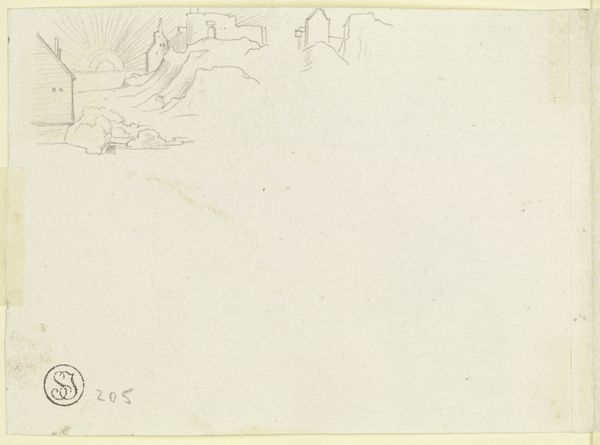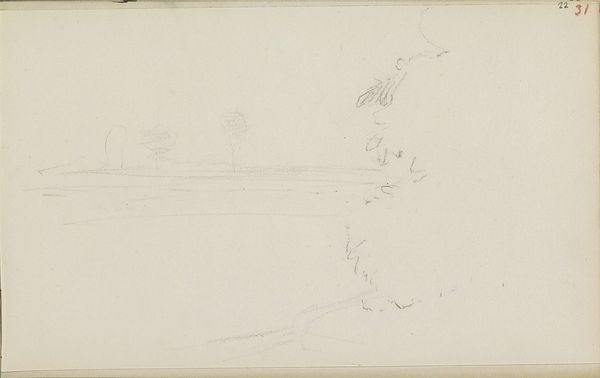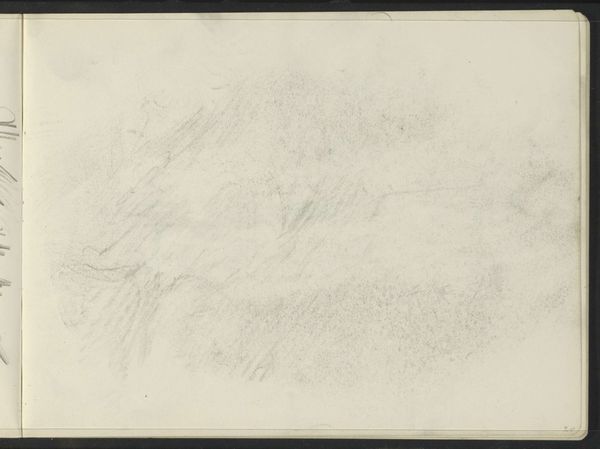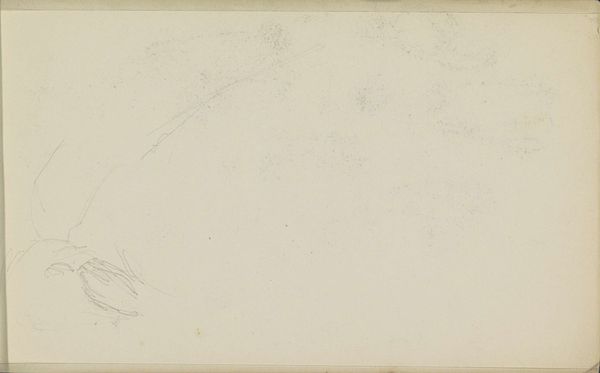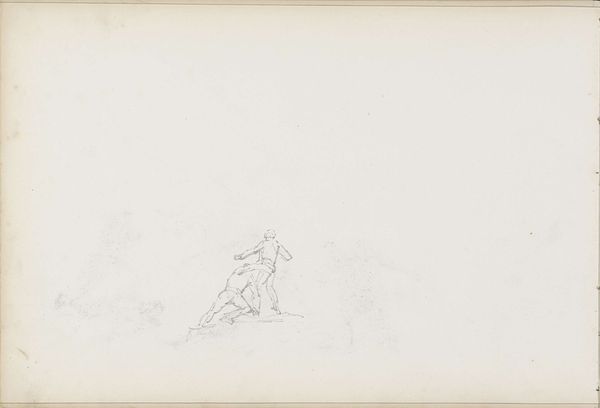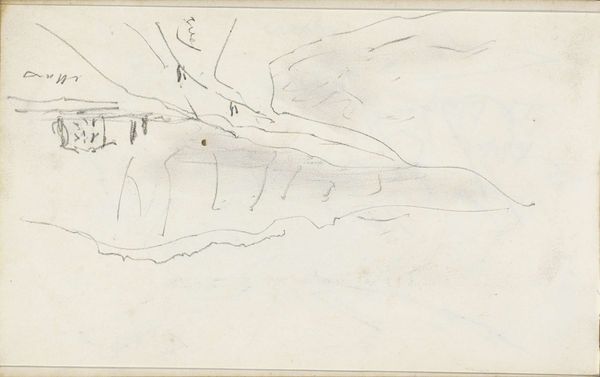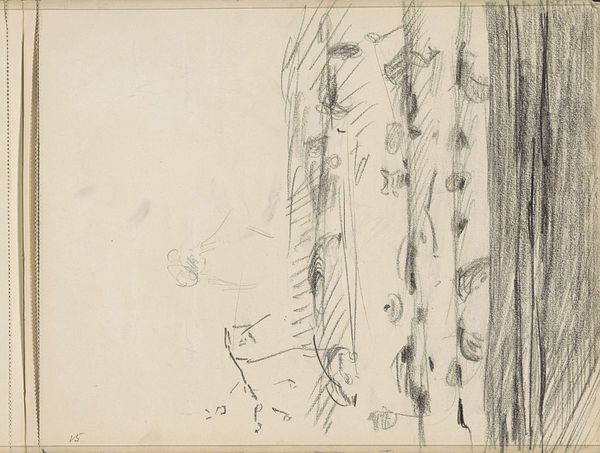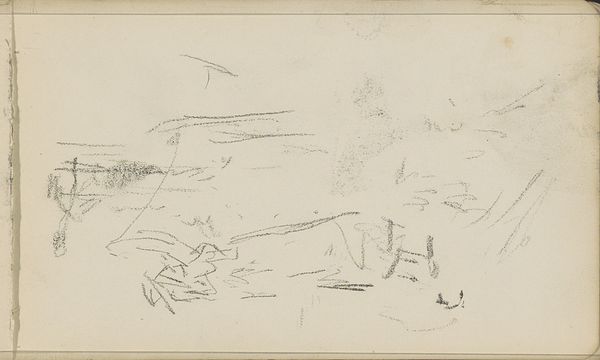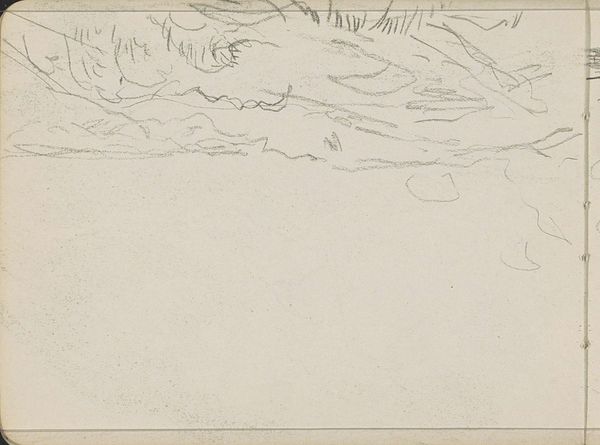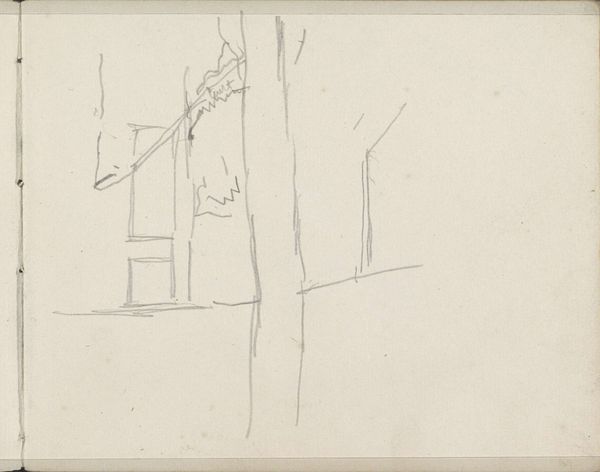
drawing, paper, pencil
#
drawing
#
amateur sketch
#
light pencil work
#
impressionism
#
pencil sketch
#
incomplete sketchy
#
hand drawn type
#
landscape
#
paper
#
personal sketchbook
#
idea generation sketch
#
ink drawing experimentation
#
pencil
#
line
#
sketchbook drawing
#
sketchbook art
#
modernism
Copyright: Rijks Museum: Open Domain
Curator: Here we have "Studie," a drawing dating back to around 1886 by George Hendrik Breitner, housed right here at the Rijksmuseum. It's a seemingly simple pencil sketch on paper. What strikes you first about it? Editor: Its brevity. It's almost a whisper of an image, a fleeting impression captured with minimal lines. There's something vulnerable about its incompleteness. What do you read in it? Curator: It's tempting to see beyond the surface of such works, especially from artists steeped in modernity. Consider the prevalence of sketches like these in 19th-century art training; sketching promoted quick and constant study of the everyday world, a constant searching, for impressions as much as forms. Editor: Absolutely, this captures the artist's active engagement. Note the light pencil work – almost impressionistic, though it's "just" a drawing. There's a landscape suggested. What's fascinating to me is how this hints at Breitner's later preoccupations in paintings that captured Amsterdam’s streets and its working class. Do you see symbolic seeds of his famous cityscapes here? Curator: That's an insightful reading. It could well be! The rapid lines are more than outlines; they are energetic shorthand. Perhaps these sketches of landscapes were studies to catch that authentic light he eventually sought in more monumental formats. Editor: I wonder, in its original context, what audience, if any, would such a study have found? How many casual observers would see something unfinished in these modern pencil markings and overlook what they imply of Breitner’s more developed, later works? Curator: Sketches like these, when publicly presented in spaces like our museum, reframe the artist's role from just skillful craftsman to active agent with an artistic inner life, showing not just skilled art production but also an individual personality who grappled with visual ideas, imbuing such casual-seeming forms with emotional significance for decades. Editor: And Breitner surely felt the shift happening during his lifetime. It really highlights the public role of art – how presentation and context completely transform meaning. Well, thanks for those details—it brings a greater appreciation to this deceptively simple sketch. Curator: The pleasure is mine. It's works like these that really ground a collection and showcase an artistic genius at its inception.
Comments
No comments
Be the first to comment and join the conversation on the ultimate creative platform.
